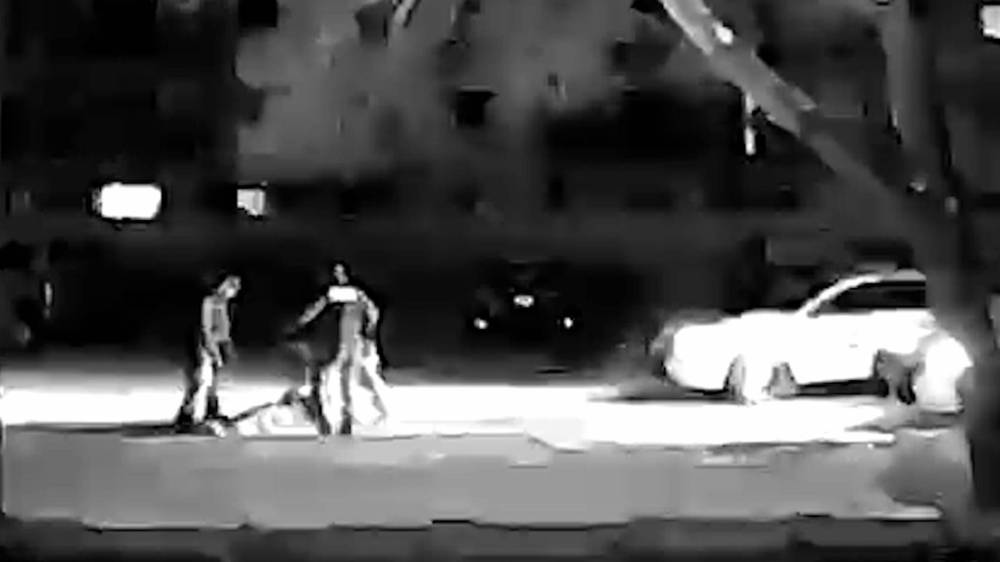What the police chief has here is a failure to communicate
Advertisement
Read this article for free:
or
Already have an account? Log in here »
To continue reading, please subscribe:
Monthly Digital Subscription
$0 for the first 4 weeks*
- Enjoy unlimited reading on winnipegfreepress.com
- Read the E-Edition, our digital replica newspaper
- Access News Break, our award-winning app
- Play interactive puzzles
*No charge for 4 weeks then price increases to the regular rate of $19.00 plus GST every four weeks. Offer available to new and qualified returning subscribers only. Cancel any time.
Monthly Digital Subscription
$4.75/week*
- Enjoy unlimited reading on winnipegfreepress.com
- Read the E-Edition, our digital replica newspaper
- Access News Break, our award-winning app
- Play interactive puzzles
*Billed as $19 plus GST every four weeks. Cancel any time.
To continue reading, please subscribe:
Add Free Press access to your Brandon Sun subscription for only an additional
$1 for the first 4 weeks*
*Your next subscription payment will increase by $1.00 and you will be charged $16.99 plus GST for four weeks. After four weeks, your payment will increase to $23.99 plus GST every four weeks.
Read unlimited articles for free today:
or
Already have an account? Log in here »
Hey there, time traveller!
This article was published 31/01/2024 (680 days ago), so information in it may no longer be current.
Winnipeg Police Service Chief Danny Smyth attended a rare Sunday news conference last weekend to give the public “some context.”
The issue of the day was the death of a 35-year-old man who died following an altercation with officers. Videos of the confrontation had already been posted on social media.
“We are aware that things can occur or be captured in little snippets online and a whole narrative can take off without anybody really knowing what occurred…. It’s a balancing act between trying to provide enough information to the public but respecting the integrity of the investigation.”

Video footage from Kristina Bauer’s doorbell camera of arrest outside the 200 block of Fairlane Avenue. (Supplied)
After viewing the videos, it is hard to believe that Smyth actually believed what he was saying.
Police were called to a domestic dispute involving a drunken man threatening his partner. Videos showed a man laying face down in the snow, who appeared startled when officers tried to wake him up. The videos further show the agitated man kicking at the officers, before he was kicked, punched, struck by a baton and shocked by a stun gun in a bid to subdue him.
Following the altercation, he becomes unresponsive and, a short time later, is declared dead.
Smyth should get credit for stepping forward to talk about a tragedy such as this. However, his comments at the news conference are, when compared to the videos, hard to reconcile.
This is not a case of “little snippets” of video creating a false narrative; this is an instance where the police response seemed out of whack with the level of threat and the chief rushed to support his officers.
And not for the first time.
The same tendencies were on display in Smyth’s response to the New Year’s Eve shooting death of university student Afolabi Stephen Opaso. By all reports, Opaso was in the grips of a mental-health crisis and brandishing two knives when he was shot by police.
Smyth used the wake of that incident to laud the overall handling of calls involving mental-health issues by the WPS.
There is always a chance the police responses may be appropriate, given all the circumstances. But until we get more details, Smyth’s repeated, premature attempts to claim the benefit of the doubt is a bad communication strategy, tantamount to a vain attempt to put out public relations fires with gasoline.
Smyth definitely has a responsibility to defend officers when they are unfairly accused of wrongdoing. But he has an equal and, possibly, larger responsibility to be accountable to the public for the actions of his officers.
Smyth has struggled to balance both of those responsibilities. When pushed on controversial stories, his default position is to blame the media.
In a 2022 online commentary posted on Substack, Smyth argued “there was a time when traditional/legacy media could be relied upon to tell a balanced story. Sure, they could ask tough questions, but at the end of the day, they usually portrayed stories involving the police fairly. I am not so sure about that anymore.”
To be clear, when Smyth says “fairly” or balanced, what he really means is “in a positive light.”
He would have you believe there is an overwhelmingly negative tone to news coverage about the police. The truth is that the vast majority of stories are quite positive, where we faithfully report whatever police spokespeople tell us. And when officers do something good, we report that with gusto.
However, stories about misconduct, unjustified use of force or botched investigations will, quite appropriately, result in negative news coverage.
What Smyth and the WPS seem to completely ignore is the extent to which their own actions — including its hostility towards news media and the withholding of information — can and often do eclipse the positive work they’ve done.
For example, the WPS has done good work to piece together the case against Jeremy Skibicki, who is charged with the first-degree murders of four Indigenous women. The trial is scheduled to begin in April.
But away from the investigatory work done to bring the case to this point, Smyth and the WPS have made several tactical errors when it comes to communication.
In mid-June, a month after the investigation started, police announced they found the remains of one of the victims, Rebecca Contois, in the city-operated Brady Road landfill. However, what police did not say was they had also found evidence that the remains of some of the other victims were likely taken to the Prairie Green landfill, just north of the Perimeter Highway.
Remarkably, that information wasn’t revealed until December. When there were howls of outrage about withholding the information, Smyth casually suggested it wasn’t worth mentioning because they considered a search at Prairie Green to be unfeasible.
Smyth’s lack of forthrightness severely damaged the already tenuous relationship between the WPS and Indigenous people, and added unnecessarily to both the complexity and cost of a search that, while difficult, is absolutely feasible.
All this leads us to an inconvenient truth about Smyth’s tenure as chief.
At the heart of the most negative stories about the WPS is a leader who does not have the instincts, or the resources, to manage his message.
Smyth can blame all this on bias in the news media. Or he can consider that in many instances, he has served as his own worst enemy.
dan.lett@winnipegfreepress.com

Dan Lett is a columnist for the Free Press, providing opinion and commentary on politics in Winnipeg and beyond. Born and raised in Toronto, Dan joined the Free Press in 1986. Read more about Dan.
Dan’s columns are built on facts and reactions, but offer his personal views through arguments and analysis. The Free Press’ editing team reviews Dan’s columns before they are posted online or published in print — part of the our tradition, since 1872, of producing reliable independent journalism. Read more about Free Press’s history and mandate, and learn how our newsroom operates.
Our newsroom depends on a growing audience of readers to power our journalism. If you are not a paid reader, please consider becoming a subscriber.
Our newsroom depends on its audience of readers to power our journalism. Thank you for your support.







